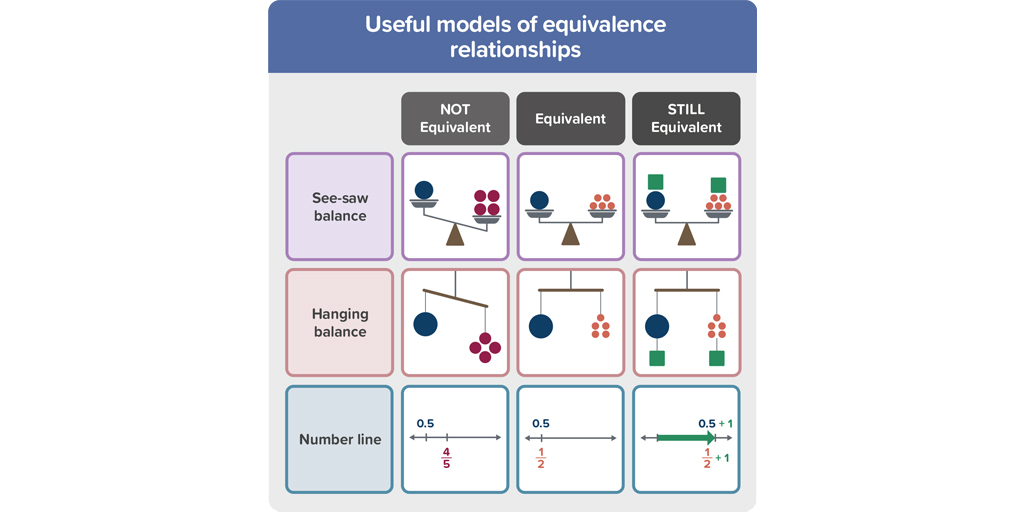30 September 2024

What does research suggest about teaching and learning equivalence?
- Equivalence can be understood as a relationship between two things that can be swapped for one another for a specific purpose
- Equivalence is not just part of learning in number or algebra; it is useful across mathematics, although it is also context-dependent
- An understanding of equivalence involves using it to solve problems, to maintain balance or equality, to comprehend something differently, and using the equal sign as a symbol of a relationship
- Understanding equivalence can be supported by recognising that objects and processes in mathematics can be represented in interchangeable ways, and recognising when they are not equivalent
- Noticing equivalence allows students to substitute one form or representation with another, which helps to solve a problem, including simplifying
- Students can learn about equivalence from a very early age, and supporting students in understanding equivalence increases mathematics achievement
- It is suggested that students use the balance principle (either see-saw balance or hanging balance) and number line models to support exploration of equivalence, as well as searching for similarities between processes (as in the infographic)
View Espresso